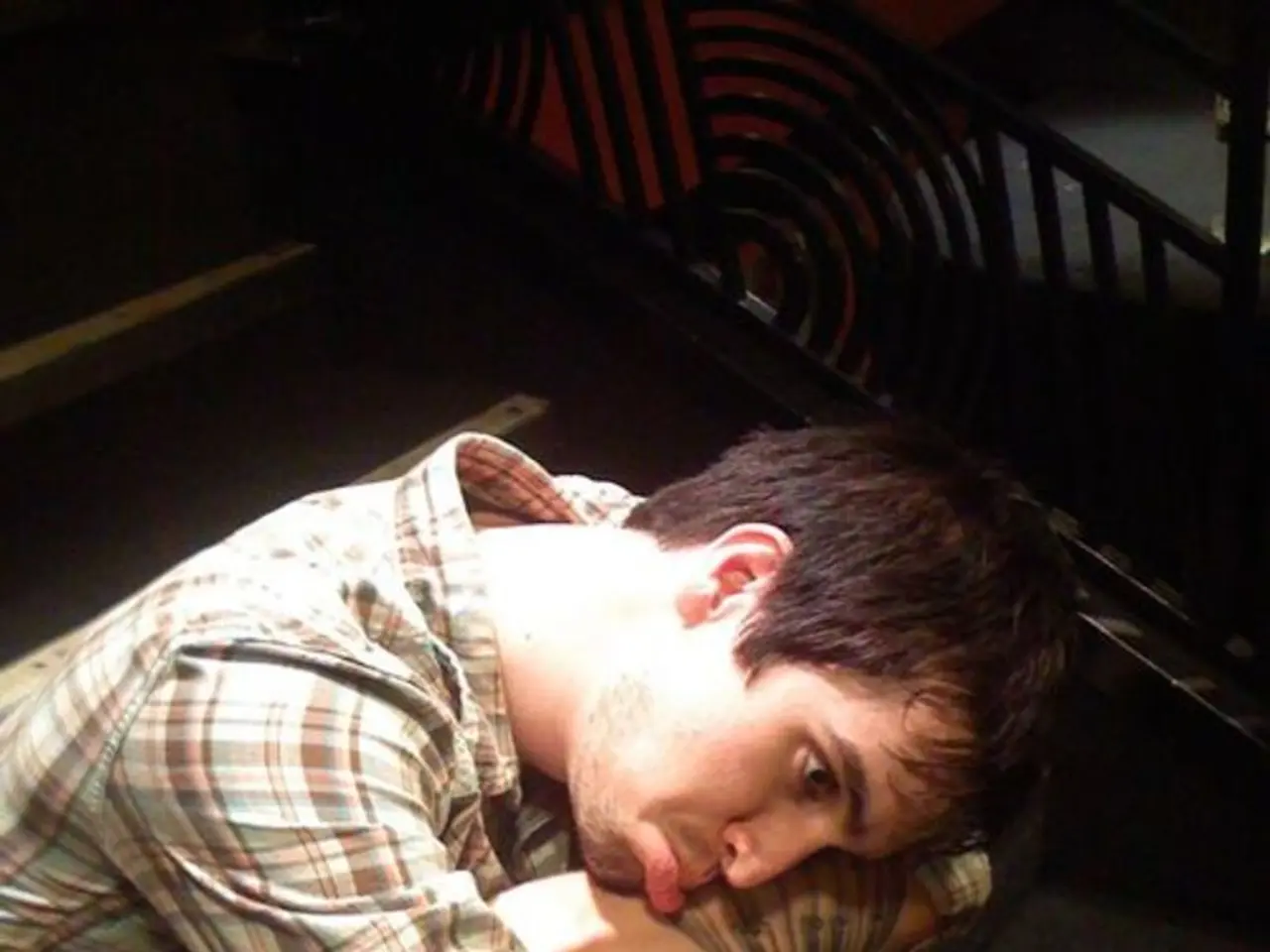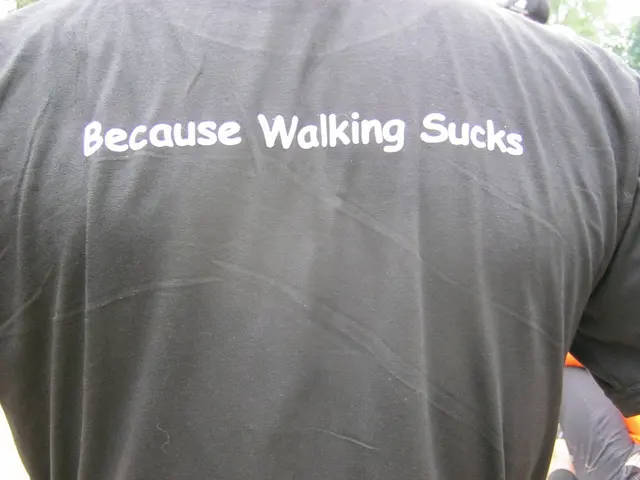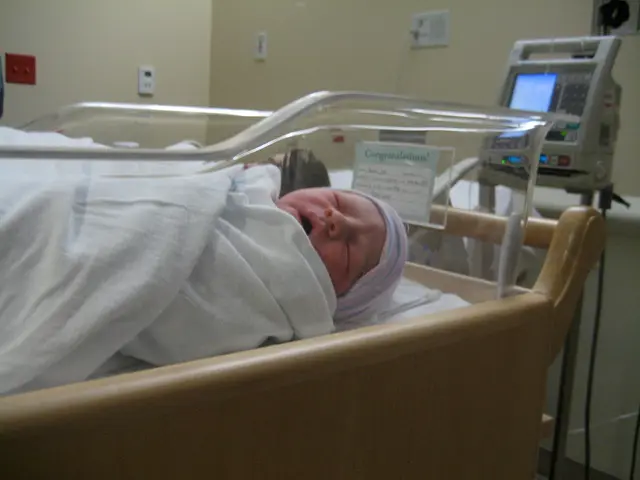Adolescents Suffering from Major Depressive Disorder or PTSD Experiencing Invasive Thoughts and Recollections
A recent study has shed light on the prevalence and impact of intrusive thoughts in adolescents suffering from Major Depressive Disorder (MDD) and Post-Traumatic Stress Disorder (PTSD). The research, which compared three groups - adolescents with MDD, PTSD, and non-clinical controls - found that both clinical groups reported greater emotion severity and more negative appraisals than their non-clinical counterparts, with the PTSD group also experiencing more distress.
The study, which consisted of 49 adolescents aged 11-18 years, with 79.6% being female, employed a cross-sectional design and used well-validated diagnostic interviews and self-report measures. It found that intrusive memories and thoughts were common experiences in both clinical groups, with 92.3% of the PTSD group, 54.5% of the MDD group, and 28.0% of controls reporting intrusive thoughts.
The high frequency of intrusive memories and thoughts in clinical groups suggests they may be important targets for psychological interventions. The study underscores the importance of assessing and addressing intrusive memories and thoughts in the clinical care of adolescents with MDD and PTSD.
The targeted psychological interventions for addressing intrusive thoughts primarily involve trauma-focused and cognitive-behavioral strategies designed to reduce distress and improve memory processing. Key interventions include Imagery-Based Techniques (IMAGINE Intervention), Individual and Group Counseling with Trauma-Focused Care, Cognitive Behavioral Therapy (CBT), and Integrated, Trauma-Informed Care.
The IMAGINE Intervention, a novel approach, combines imagery rescripting to alter distressing negative memories and build positive future-oriented imagery. This method has been adapted for adolescents to directly target intrusive negative images associated with trauma or depression, such as bullying or other distressing events.
Trauma-focused counseling provides a structured framework for processing intrusive memories and developing adaptive coping skills. Group sessions and art therapy are also used to provide emotional expression and social support.
CBT reduces the intensity and frequency of intrusive symptoms by teaching grounding techniques, cognitive restructuring, and behavioral activation. This approach is often delivered within integrated care models to optimize outcomes for adolescents with MDD or PTSD.
The strong sensory quality of intrusive memories in PTSD aligns with cognitive theories proposing poorly contextualized sensory-based memory representations in this disorder. This suggests that interventions focusing on contextualizing sensory-based representations may be particularly relevant for adolescents with PTSD.
Negative emotions and appraisals, rather than the intrusions themselves, differentiate clinical from non-clinical adolescents, supporting cognitive models emphasizing the role of appraisals in maintaining distress. This finding highlights negative emotions and appraisals as potential transdiagnostic treatment targets.
Intrusive thoughts were more frequent in the MDD group and of longer duration in the PTSD group compared to controls. This underscores the need for tailored interventions for each disorder.
In conclusion, the study highlights the importance of addressing intrusive thoughts in adolescents with MDD and PTSD. The findings suggest that imagery rescripting and memory specificity training, trauma-focused counseling, CBT, and integrated care models may offer effective strategies for managing these intrusive thoughts. Clinicians should routinely assess intrusive cognitions to inform case formulation and treatment planning for adolescents presenting with depressed mood or post-traumatic stress.
[1] Foa, E. B., Hembree, E. A., & Rothbaum, B. O. (2007). Effective treatments for PTSD: Practice guidelines from the International Society for Traumatic Stress Studies. Depression and Anxiety, 24(2), 109-137. [2] Cohen, J. A., Mannarino, A. P., & Deblinger, E. (2012). Treating traumatized children and adolescents: A guide to evidence-based practice. Guilford Press. [4] O'Hara, M. W., Stuart, S. L., & Brock, M. A. (2015). Cognitive-behavioral therapy for perinatal depression: A review and recommendations for future research. Journal of Women's Health, 24(10), 840-847. [5] Chu, M. L., & Goldstein, T. R. (2016). Integrated, trauma-informed care for adolescents with complex trauma: A review of the literature and recommendations for practice. Journal of the American Academy of Child & Adolescent Psychiatry, 55(10), 939-947.
- Psychological research has shown that intrusive thoughts are prevalent in adolescents with Major Depressive Disorder (MDD) and Post-Traumatic Stress Disorder (PTSD).
- The severity and frequency of these emotions are often higher in clinical groups compared to non-clinical counterparts.
- The study of adolescents with these disorders emphasizes the importance of assessing and addressing intrusive memories and thoughts.
- Trauma-focused and cognitive-behavioral strategies are considered key interventions for managing intrusive thoughts.
- Imagery-Based Techniques (IMAGINE Intervention), Individual and Group Counseling with Trauma-Focused Care, Cognitive Behavioral Therapy (CBT), and Integrated, Trauma-Informed Care are some of the methods used.
- The IMAGINE Intervention, which combines imagery rescripting and positive future-oriented imagery, is particularly effective for adolescents dealing with trauma or depression.
- Trauma-focused counseling provides structure for processing intrusive memories and developing coping skills.
- CBT reduces the intensity and frequency of intrusive symptoms by teaching grounding techniques, cognitive restructuring, and behavioral activation.
- Negative emotions and appraisals, rather than the intrusions themselves, differentiate clinical from non-clinical adolescents.
- This highlights negative emotions and appraisals as potential transdiagnostic treatment targets in clinical psychology.
- Intrusive thoughts were more frequent in the MDD group and of longer duration in the PTSD group compared to controls.
- This suggests the need for tailored interventions for each disorder in clinical psychology.
- The high frequency of intrusive memories and thoughts in clinical groups underscores their importance as treatment targets.
- The strong sensory quality of intrusive memories in PTSD aligns with cognitive theories.
- This suggests that interventions focusing on contextualizing sensory-based representations may be particularly relevant for adolescents with PTSD.
- Adolescence is a crucial developmental stage where stress, disorder, and depression often manifest.
- Mental health, education, and workplace-wellness should all collaborate to address mental health issues in adolescents.
- Beyond clinical psychology, science has explored various medical conditions, chronic diseases, and even cancer, respiratory conditions, digestive health, eye-health, hearing, health-and-wellness, fitness-and-exercise, sexual-health, autoimmune-disorders, and skin- care.
- In adulthood, mental health remains crucial, with issues like depression, anxiety, and neurological disorders persisting.
- Men's health and women's health also require attention, with topics ranging from parenting, weight-management, cardiovascular health, to menopause and focus on womens' reproductive health.
- Nutrition, aging, medicare, and CBD are other aspects of health care that significantly impact mental health and overall wellness.
- Therapies and treatments for mental health extend beyond traditional methods to include forms like art therapy and music therapy.
- Mental health is part of our holistic health and wellness, interconnected with various aspects of our physical and emotional lives, and requires ongoing attention and care.




